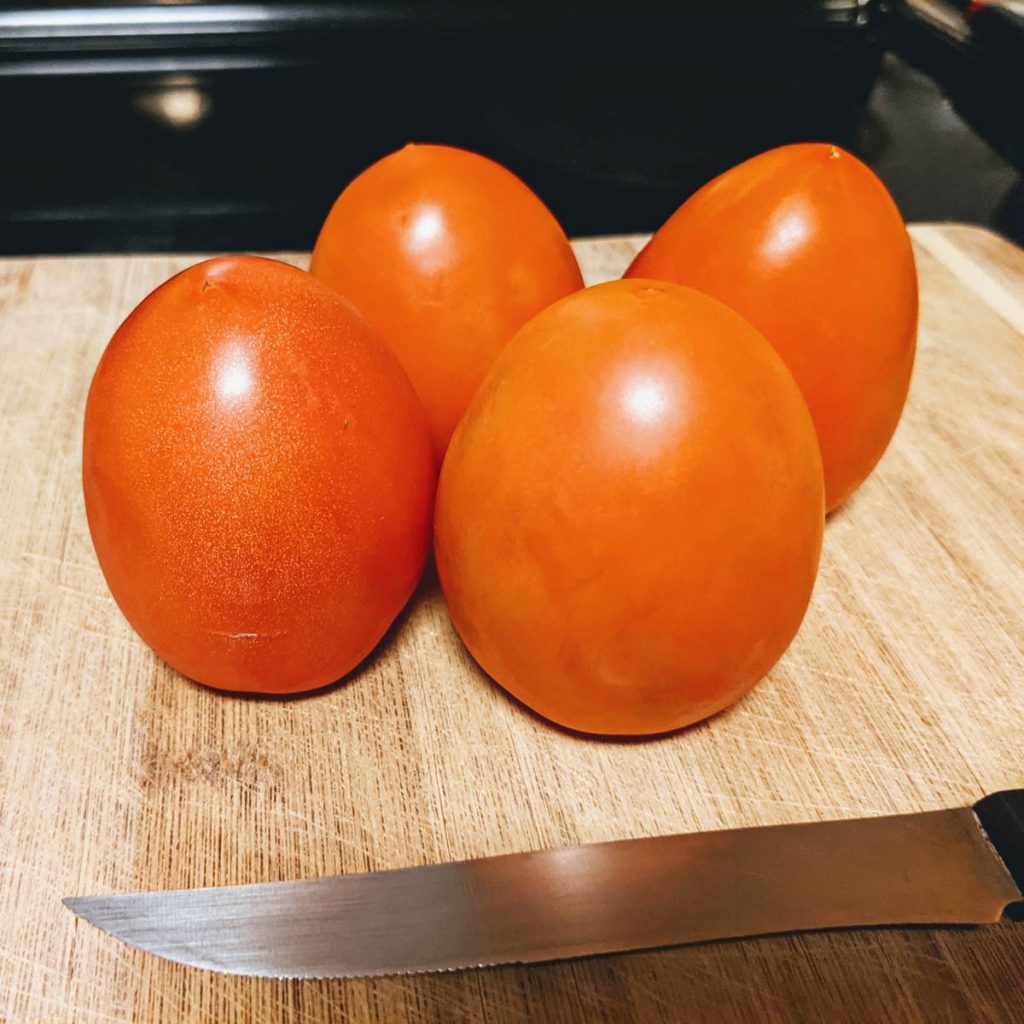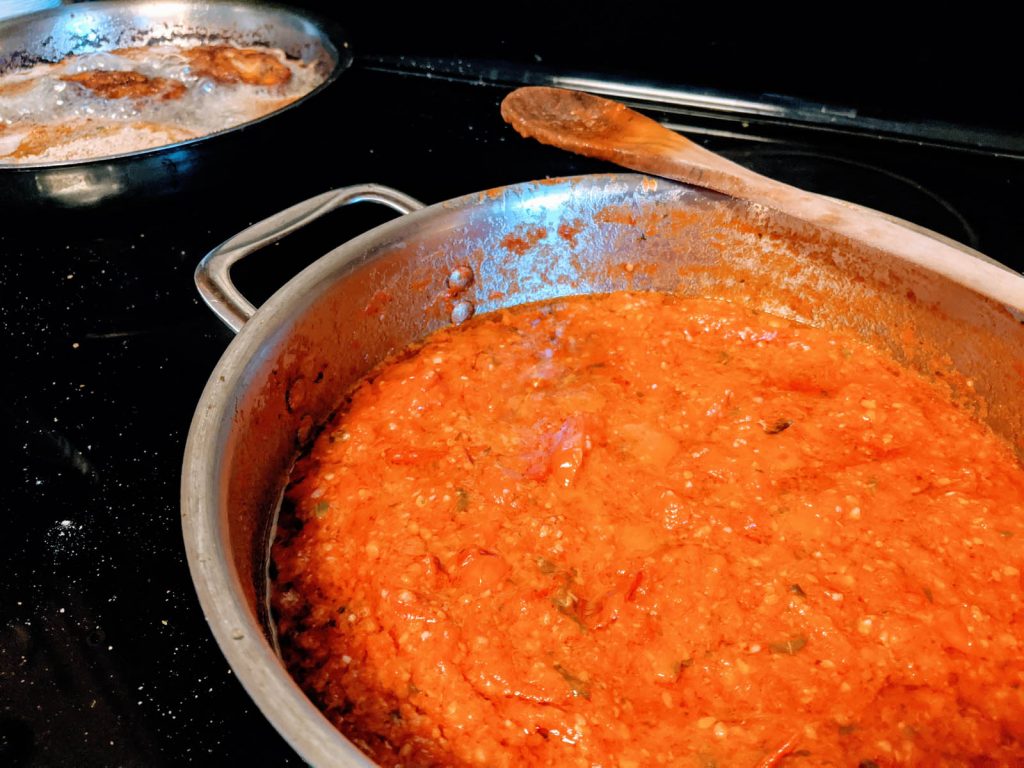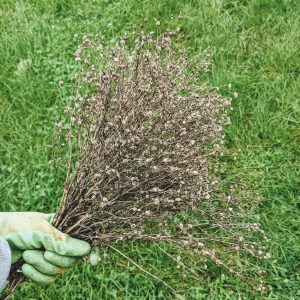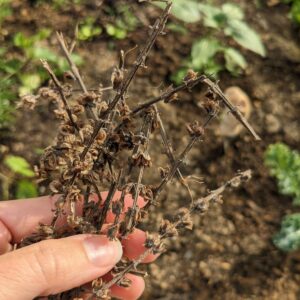Plum Tomatoes – Guide to Growing + 5 Awesome Tips
Prized for their rich flavor that translates beautifully into Italian food, plum tomatoes are wonderful to grow in the garden.
The plum tomato cost isn’t very much, less than 60 cents each in many cases. So, growing plum tomatoes vs. buying them may not save you much money.
However, gardening isn’t just about the money!
Grow those paste tomatoes so you can enjoy your own homemade tomato sauce this year.
Or make nachos! Or a plethora of Italian specialties…
But first, let’s go over some important facts and tips about sauce tomatoes.
What Are Plum Tomatoes?
Plum tomatoes are a kind of paste tomato plant, also sometimes called Roma tomatoes. The fruits are firm, red, and oblong in shape. Extensively used in Italian cooking, plum tomatoes are widely known as the “sauce tomato.”
What Do Plum Tomatoes Look Like?
Plum tomatoes are egg-shaped or pear-shaped and this oblong tomato can fit in the palm of your hand. It has a firm texture and robust flavor that lends itself well to hearty sauces and Italian cuisine.

Plum Tomatoes vs. Roma Tomatoes
Are plum and Roma tomatoes the same? Here’s the truth. The Roma tomato is a plum tomato. Yet, all plum tomatoes are not Romas.
Roma is a type of plum tomato. The Roma plum tomato plants are popular at garden centers and great to grow at home for your own sauce tomato harvest.
You’ll find several different types of plum tomato plants available to grow. Most are determinate varieties, meaning they grow to a set size.
(Quite a few other types of tomatoes are indeterminate, meaning they will grow and grow to no set size. It could be enjoyable to grow some of each kind if you have the space.)
Different Types
Numerous types of plum tomatoes exist. Your choice may come down to the flavor profile you prefer.
Familiarize yourself with these different kinds so you can decide which ones to grow.
- Roma Tomatoes
- San Marzano Tomatoes
- Amish Paste
- Big Mama
The plum tomato offers versatility in the kitchen. If possible, consider growing a variety of different tomatoes so you can add more flavor dimensions to your homemade spaghetti sauce.
You can plant your own tomatoes from seed or buy starter plants from your favorite nursery or garden center.
How to Grow Plum Tomatoes – Tips
Growing plum tomatoes for many is a milestone of being a gardener. I’ve found gardeners of all levels are proud to talk about their tomatoes or share tips.
With this in mind, I once heard a funny saying…
Gardeners will happily spend hundreds of dollars on soil, pots and grow bags, fertilizer, trellises, stakes, and other supplies – to save $2.99 on tomatoes! Hah!
What they don’t clear up is how rewarding it is to grow tomatoes in the backyard garden. (And, how easy it is!)
Let’s get started with some tips!
- Try Companion Planting – Tomatoes pair well with basil and marigolds, sure. But you’ll find there are numerous other tomato companion plants to consider for your garden layouts.
- Plant Sideways – When transplanting plum tomatoes outside, remember that tomato plants have hairy stems that will easily sprout roots in the soil or in the ground. Lay your tomato plant sideways in the soil where you plan to grow them. The buried stem will develop into a wonderful root system!
- Succession Planting Plum Tomatoes – Many kinds of sauce tomato plants are determinate, meaning they grow to a set height and size. For this reason, try succession planting to extend your harvest. Plant a new set of plum tomato seeds every two weeks or so until roughly the middle of your growing season. (Leave at least 90 days before the first expected frost date.)
- Tickle those Tomatoes – Pollinating tomato plants is so easy! Simply take a paintbrush or a pencil and lightly tap on the yellow flowers once they’re open. Check daily so you don’t miss any opportunities to increase your harvest.
- Save Seeds from the Best – Work on your own brand of natural selection by choosing to save seeds from only the best plum tomatoes on your favorite tomato plant.
Cooking Plum Tomatoes
Cooking plum tomatoes is so easy and this variety works beautifully in many recipes. We use Roma tomatoes to make homemade spaghetti sauce on the stovetop.

While not truly cooking in the sense of heating the food, we’ve also made homemade salsa with our homegrown Roma tomatoes. They would also make a lovely plate of nachos!
More than anything, though, I love to make roasted plum tomatoes for my very own recipe, Balsamic Bruschetta Chicken. This recipe uses tomatoes, fresh basil, Italian seasoning, and olive oil to roast everything.
I came up with this dish in 2020, just walking through my garden and enjoying the aroma of the tomato plants mixed with their basil companions.
This homemade plum tomato chicken dish pairs wonderfully with pasta!
Some folks prefer to can tomatoes in mason jars for future use, or freeze them. You may even find some recipes for freeze dried or sundried tomatoes!
Final Thoughts
Growing tomatoes is rewarding for the soul as well as your palate. Enjoy this experience with your family and take your tomatoes from the garden to the table.
Each year, take a little time to document your gardening successes and insights you’ve learned. You can write these down in a garden journal so you remember for the next growing season.
If you are growing plum tomatoes, be sure to share your favorite tip or ask a question in the comments below. It’s always fun to chat and share best practices in the garden.






